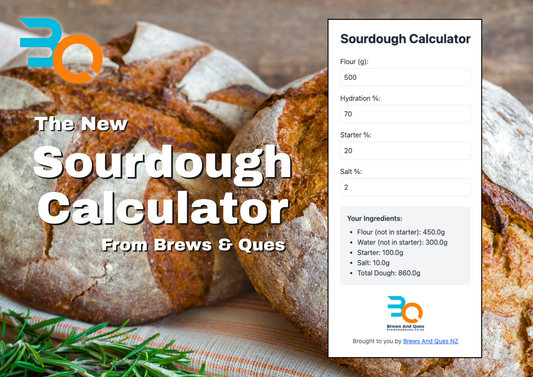The Ultimate Guide To Home Stills For Making Delicious Spirits In Your Home.
Distilling at home has become increasingly popular among enthusiasts who want to explore the art and science of creating their own spirits.
Whether you're interested in producing whiskey, rum, vodka, or other distilled beverages, choosing the right still is crucial to ensure a successful and enjoyable home distilling experience.
In this comprehensive guide, we'll explore the different types of stills available for home distillation and help you determine which one is best suited for your needs.

1. Pot Stills:
1.1 Overview:
The pot still is one of the oldest and most traditional types of stills used for distillation. It consists of a large pot or kettle, a swan neck, and a condensing coil.
The pot still is known for its versatility and ability to produce spirits with rich flavours and aromas. It is particularly well-suited for producing whiskey, brandy, and other spirits that benefit from the retention of flavorful congeners.
1.2 Pros:
- Versatile and suitable for a wide range of spirits
- Produces spirits with character and complexity
- Retains flavorful compounds during distillation
- Allows for customisation and experimentation
1.3 Cons:
- Requires multiple distillation runs to achieve higher alcohol concentrations
- Slower distillation process compared to other still types
- May require more attention and monitoring during operation

2. Reflux Still:
2.1 Overview:
The reflux still, also known as a column still, is designed to produce high-proof spirits by allowing for multiple distillation stages. It consists of a column packed with plates or packing material, a condenser, and a collection vessel.
The reflux still is highly efficient at separating alcohol from impurities, resulting in a clean and neutral spirit. It is commonly used for producing vodka, gin, and other spirits that require high alcohol purity.
2.2 Pros:
- Produces high-proof spirits with greater alcohol concentration
- Efficient separation of impurities for a clean and neutral spirit
- Faster distillation process compared to pot stills
- Requires fewer distillation runs for higher alcohol content
2.3 Cons:
- Less suitable for producing spirits with pronounced flavours and aromas
- Limited ability to retain flavorful congeners
- Requires precise temperature control and reflux management

3. Hybrid Still:
3.1 Overview:
A hybrid still combines elements of both pot stills and reflux stills to offer a versatile and flexible distillation process. It typically includes a pot still and a column section, allowing the distiller to switch between pot still mode and reflux mode.
Hybrid stills provide the best of both worlds, allowing for the production of flavorful spirits and high-proof neutral spirits.
3.2 Pros:
- Offers versatility for producing a wide range of spirits
- Allows for customisation and experimentation
- Produces both flavorful spirits and high-proof neutral spirits
- Faster distillation process compared to traditional pot stills
3.3 Cons:
- May require more complex setup and operation
- Requires precise temperature control and reflux management

4. Considerations for Choosing a Still:
4.1 Purpose and Spirits:
Consider the type of spirits you intend to produce. If you're interested in creating flavorful spirits with pronounced aromas and tastes, a pot still or hybrid still would be a good choice.
If your goal is to produce high-proof neutral spirits, a reflux still would be more suitable.
4.2 Legal Considerations:
Before embarking on home distillation, ensure that you are aware of and comply with the legal requirements and regulations regarding distillation in your country or region.
Distilling spirits at home may be restricted or require specific permits. Fortunately here in New Zealand, there are no legal restrictions preventing the production of Spirits for personal consumption.
However, there are certainly regulations preventing the sale of alcohol, so ensure that all spirits produced is strictly for personal consumption.
4.3 Budget and Size:
Determine your budget and the available space for your still. Pot stills and hybrid stills are typically more affordable and compact compared to reflux stills, which tend to be larger and more complex.
4.4 Skill Level and Experience:
Consider your level of distilling experience and comfort with operating different types of stills. Pot stills and hybrid stills are generally more forgiving and suitable for beginners, while reflux stills may require more technical knowledge and skill.

Conclusion:
Choosing the right still for home distillation depends on your desired spirits, personal preferences, budget, and skill level. Pot stills are excellent for producing flavorful spirits with depth and complexity, while reflux stills are ideal for high-proof neutral spirits. Hybrid stills offer a versatile option that allows you to experiment with both styles of distillation.
Carefully consider your goals, do thorough research, and take into account legal considerations before making your decision. Remember to always prioritise safety and responsible distilling practices. With the right still and a passion for the craft, you'll be well on your way to creating your own unique spirits that can be enjoyed and shared with friends and family. Cheers to your home distilling journey!
Which still should you use for distilling at home?
Thanks for reading our article, be sure to visit our Home Distillation Collection Page to find out more about our range of Home Distillation Equipment and as always be sure to drop us a line should you need any help or have any questions about our extensive range of products. We look forward to hearing from you.








